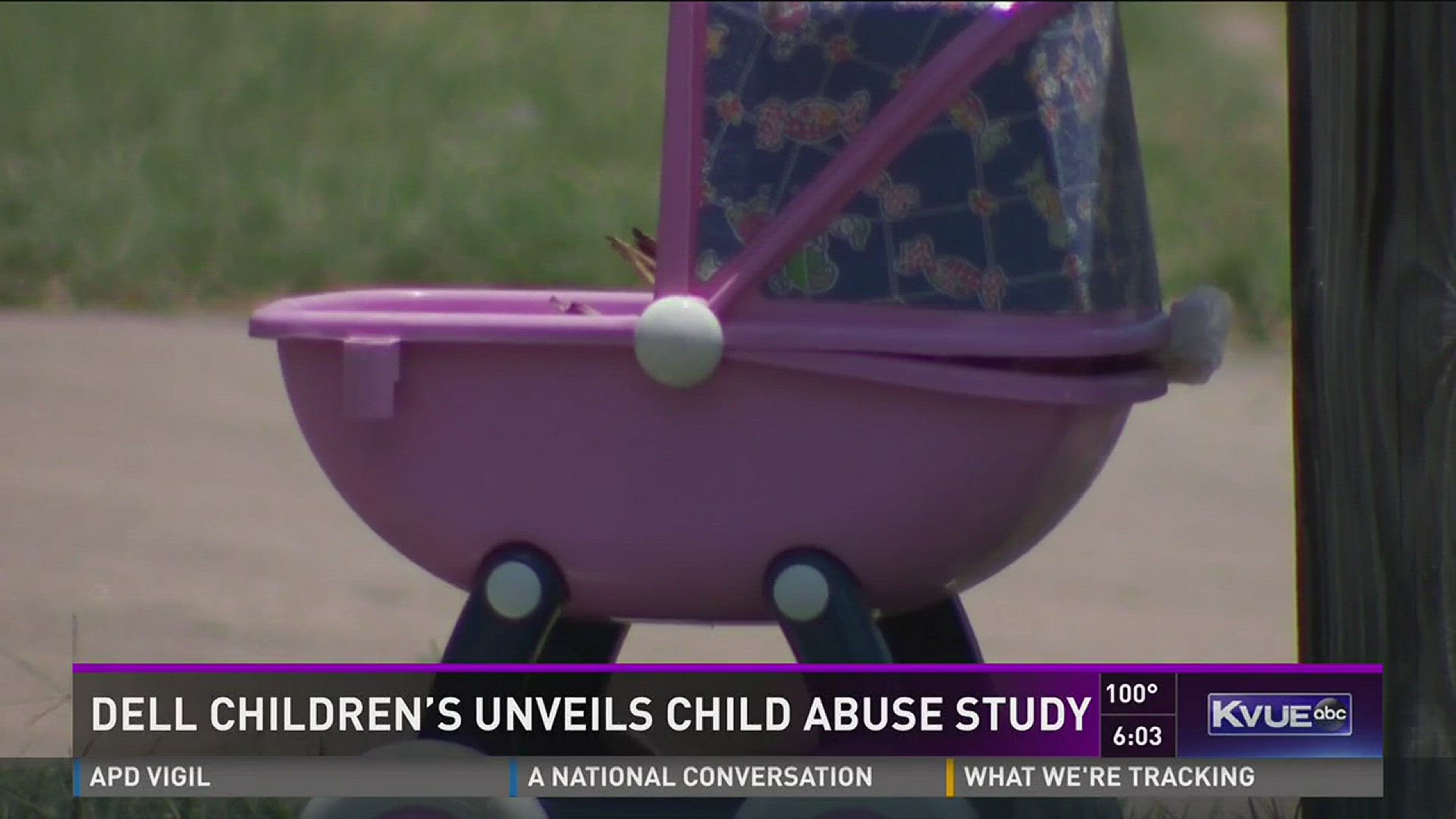Doctors at Dell Children's Medical Center are noticing an alarming trend, more and more children are coming into the emergency room as victims of abuse.
"We see children every day in whom abuse or neglect is suspected and the problem seems to be growing," said Dr. Kelly Liker, MD, Medical Director of Child Abuse Pediatrics for Dell Children's Medical Center.
In 2012, one in every 100 kids were victims of abuse across the United States. In Travis County, the statistic reported was one in 87.
"It's really the tip of the iceberg," said Dr. Karla Lawson, PhD, Director of the Trauma and Injury Research Center at Dell Children's Medical Center. "Other studies have shown if you actually have self reports from people you're talking about one in 25 kids. So if you think about that, it's every classroom in this city has one kid."
"Child abuse is something we're not very comfortable thinking about or talking about," added Dr. Liker, "but it's going to happen to a child whether we want to think about it or not. So when they say something we really have to act to protect them."
The most common forms of abuse are neglectful supervision, physical abuse and sexual abuse. The doctors also say the most likely victims are the most vulnerable, babies.
"A lot of what we see, there are two kinds of main time periods where children are abused and that's in the early stages of their development where crying is an issue and that's a little bit later on when potty training is an issue," explained Dr. Lawson.
The disturbing trend prompted doctors at Dell Children's to take a closer look at the problem to see if the community could do more to prevent child abuse.
"Really what we felt was the best way to kind of target the problem was not from a treatment standpoint after the fact but was to try to go upstream and see if we could prevent these kids from coming to out [Emergency Department] at all," Lawson said.
Researchers used data from CPS from 2003 to 2012 and created maps of child abuse "hot spots". The maps focus on 2009 to 2012 when, nationally, child abuse reports spiked. Before then, the most abuse happened in what's called the "East Austin Crescent", an area east of I-35 from Rundberg Lane to Dove Springs, but that's not the case in more recent years.
"The urban core was showing a decreasing rate of substantiated reports of child maltreatment per one thousand children," said Dr. Amanda Barczyk, Ph.D., who is a Research Scientist at Dell Children's. "And we again thought, maybe the East Austin Crescent is expanding a bit but in this map, you can see even more the movement to the periphery of our county."
Researchers found these areas lack educational, economic, and health care resources, putting more stress on families and creating higher risk factors for child abuse.
"We specifically mapped mental health services and mapped substance abuse services and what we found was despite the fact that many of the issues that were going on in one neighborhood with child maltreatment, that's not where the services were," Dr. Lawson said.
"The people that perpetrate are not generally bad people in and of themselves. They're in situations where they're stressed and that's why you see it in economic stress and developmental stress over where there might be poverty, you have a lot more stresses in the lives of those families and then add on the stress of the normal development of a child," said Dr. Lawson.
Along with releasing the maps, Dell Children's held a summit with stakeholders to come up with the top three things they can do to decrease child abuse rates.
"If we can help in terms of economic attainment and educational attainment and decreasing the stress lives of families then we can make a difference in this problem," said Lawson.
Dell Children's plan to put out a final report with the maps and suggestions discussed during the summer in the next few months.

